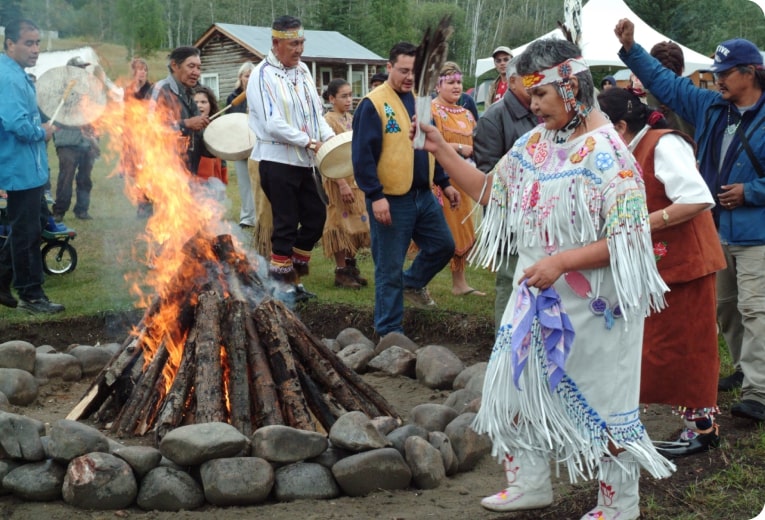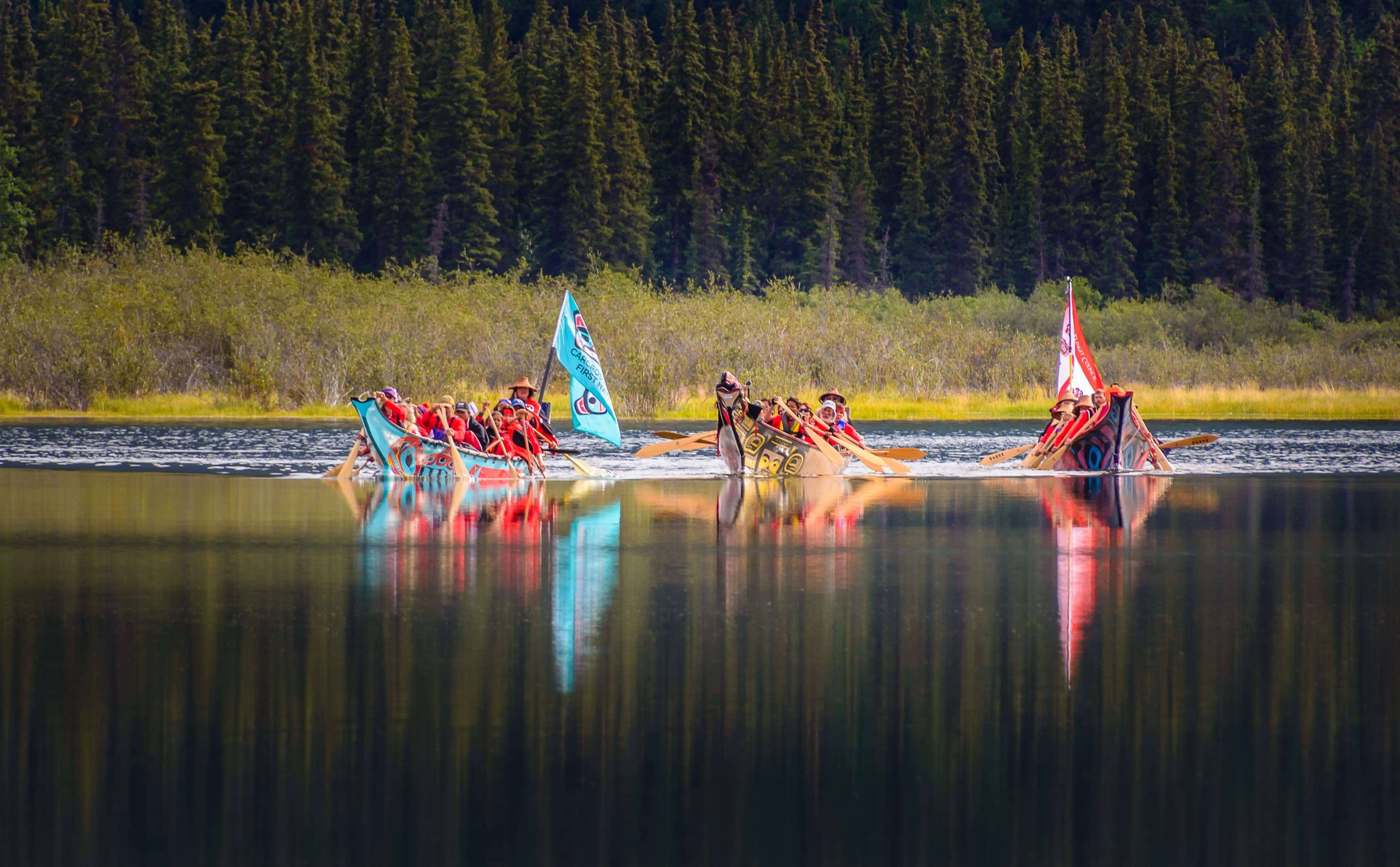A summary of our journey
First Nations people have lived in the Yukon for thousands of years. This is the story of our journey towards the land claims and self-government agreements many have today.
Our journey begins here
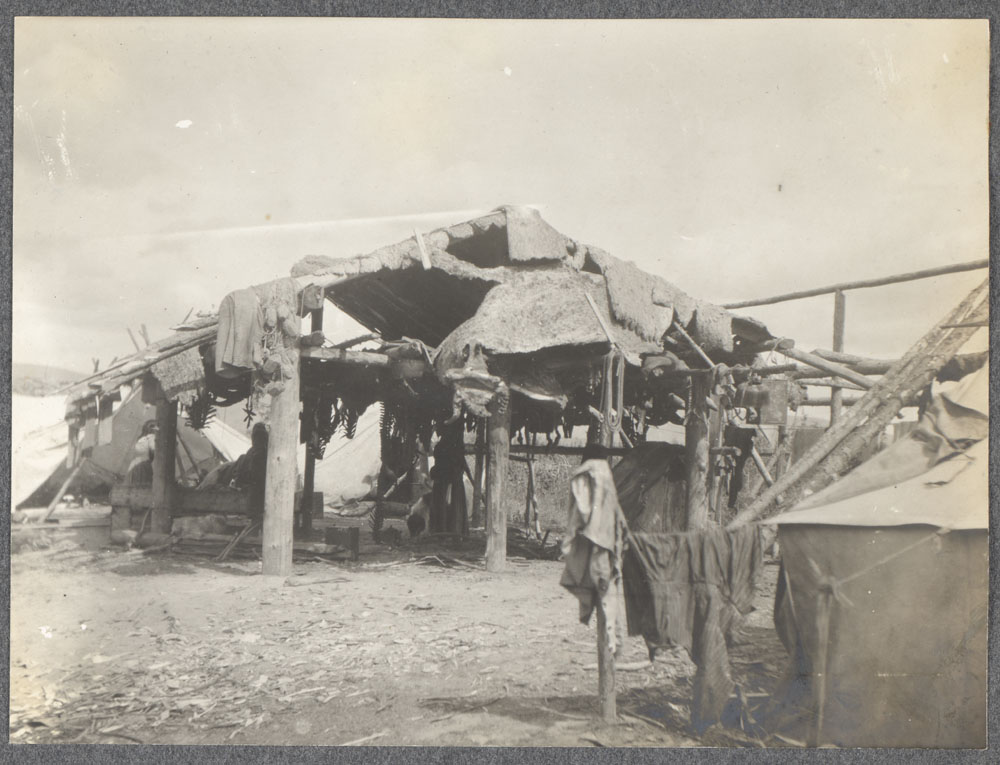
24,000 BP
First Nations people have lived in Yukon for thousands of years.
People migrated to North America across the Bering land bridge. There is archaeological evidence of people in the Blue Fish Caves near Old Crow from up to 24,000 years ago. Oral traditions and archaeological evidence document the ways of Indigenous ancestors on this land for thousands of years.
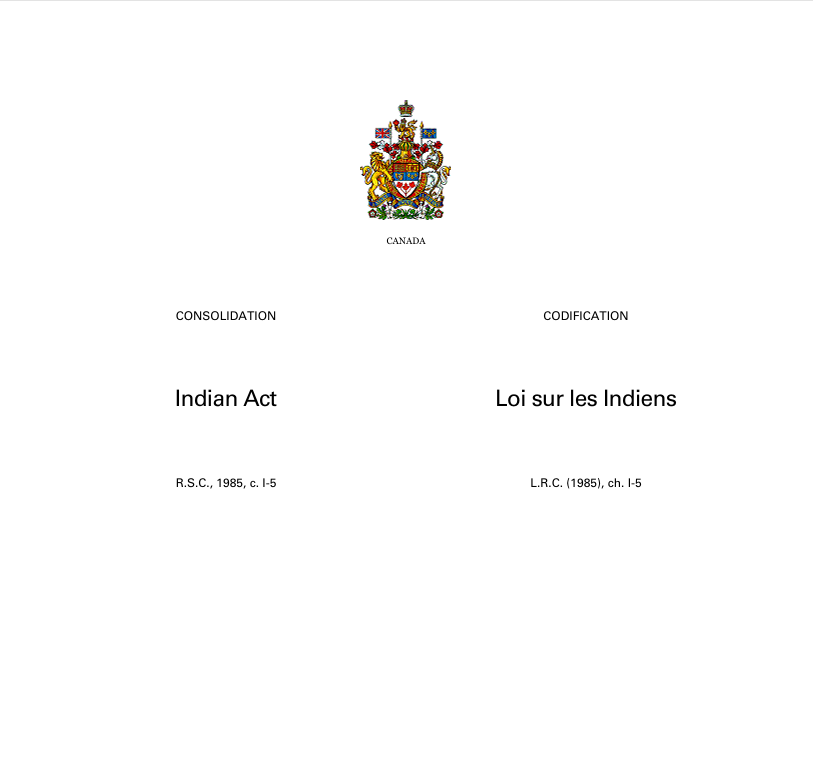
1876
Creation of the Indian Act
This federal act outlined Government of Canada obligations to First Nations Peoples and was used to define and administer Indian status as well as administer and manage lands, monies and resources of First Nations governments known as Indian bands.
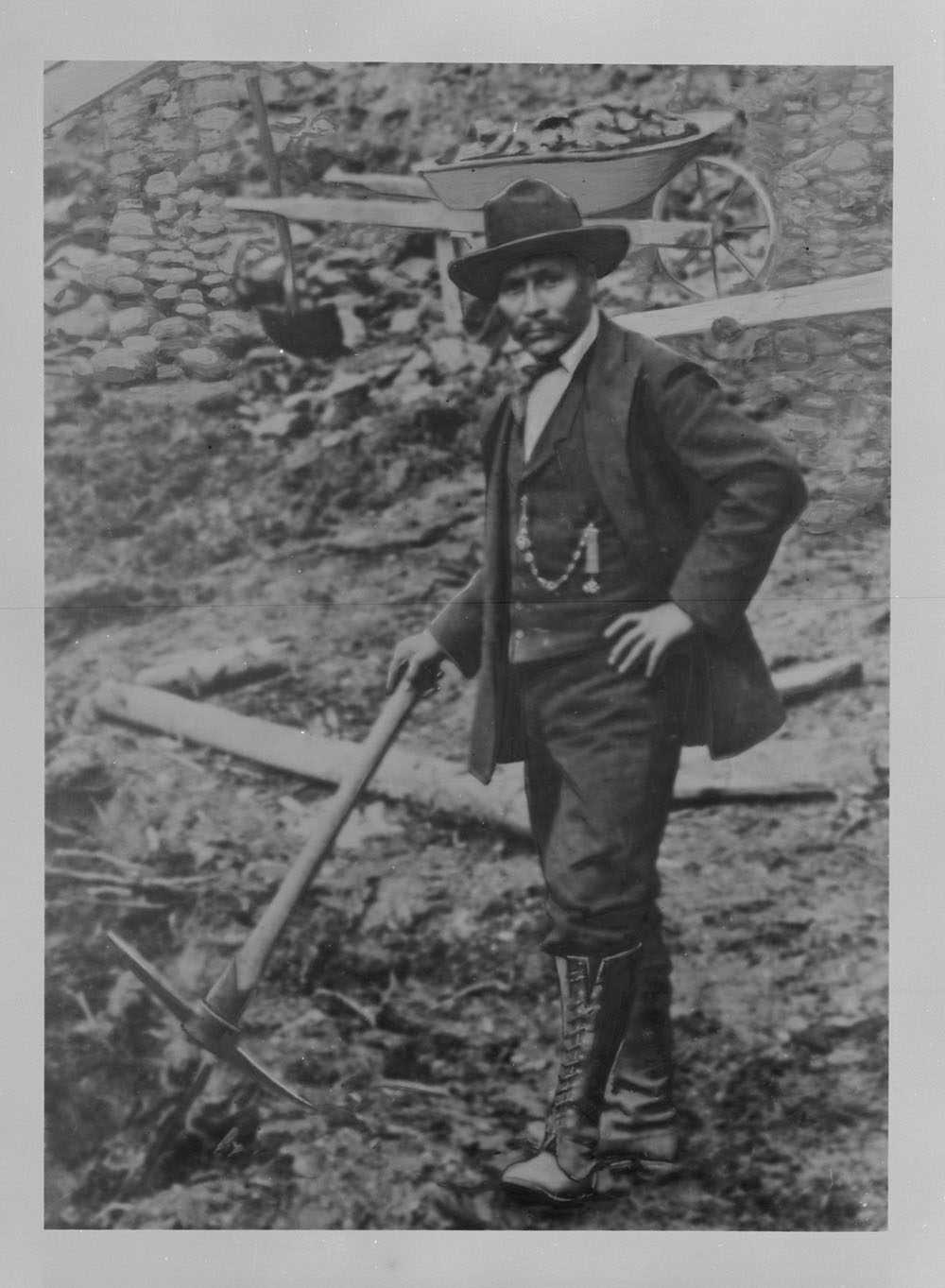
1896
Skookum Jim discovers gold
"Skookum" Jim, a Tagish of the Dakhlawèdí clan and the Wolf moiety, found a nugget on Rabbit (Bonanza) Creek in August 1896 that began the Klondike Gold Rush and changed the history of the Yukon.
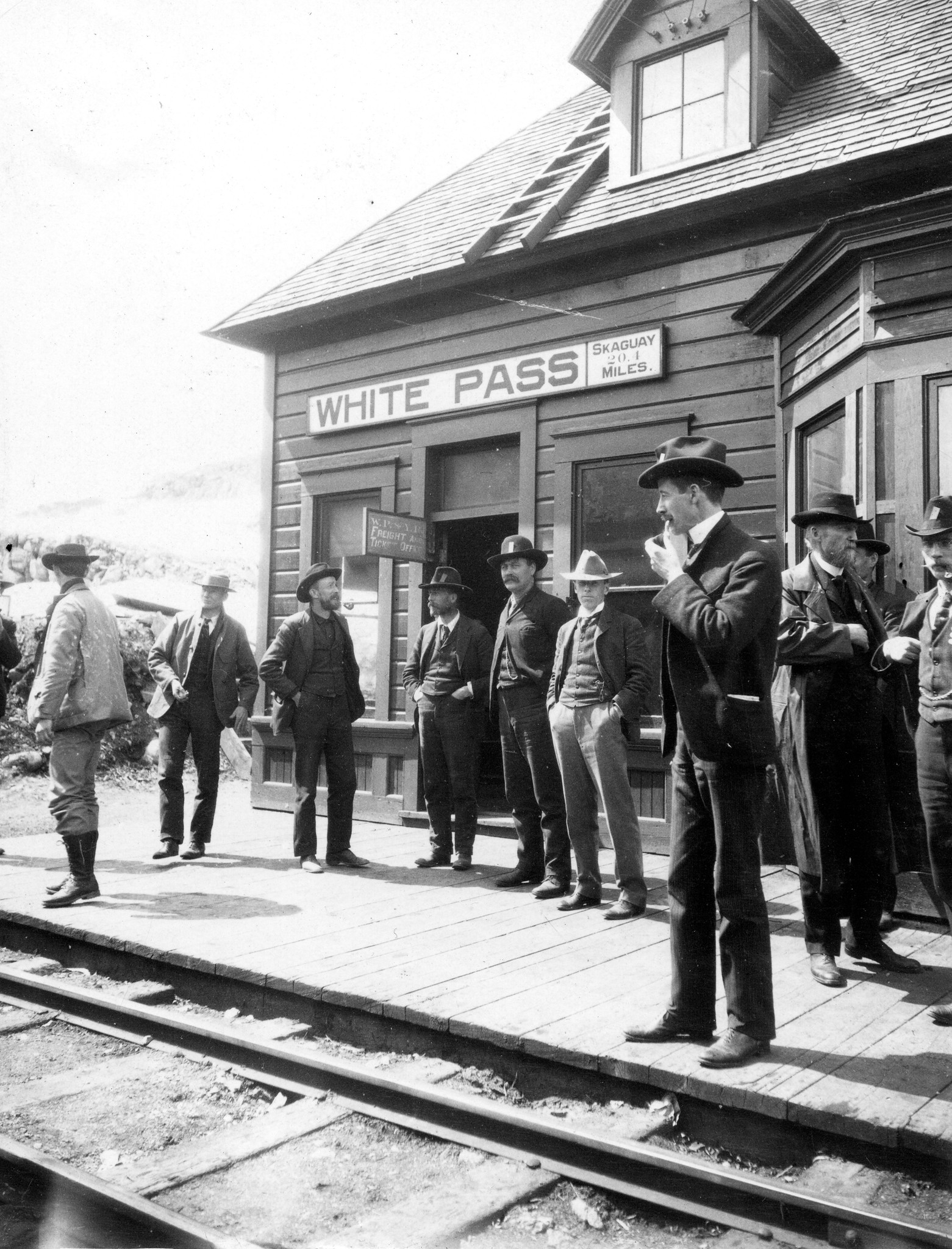
1897
The Klondike Gold Rush
The Klondike Gold Rush brought tens of thousands of gold seekers to the Yukon, creating social and cultural upheaval for the First Nations people.

1900
Chief Jim Boss recognized the effect of settlers and petitioned the Government
Chief Jim Boss of the Ta’an Kwäch’än laid the foundation for First Nations land claims almost 100 years before the first agreements were signed in the Yukon. In 1900 and 1902, Boss wrote to the Yukon Commissioner and the Superintendent General of Indian Affairs requesting compensation for his people.
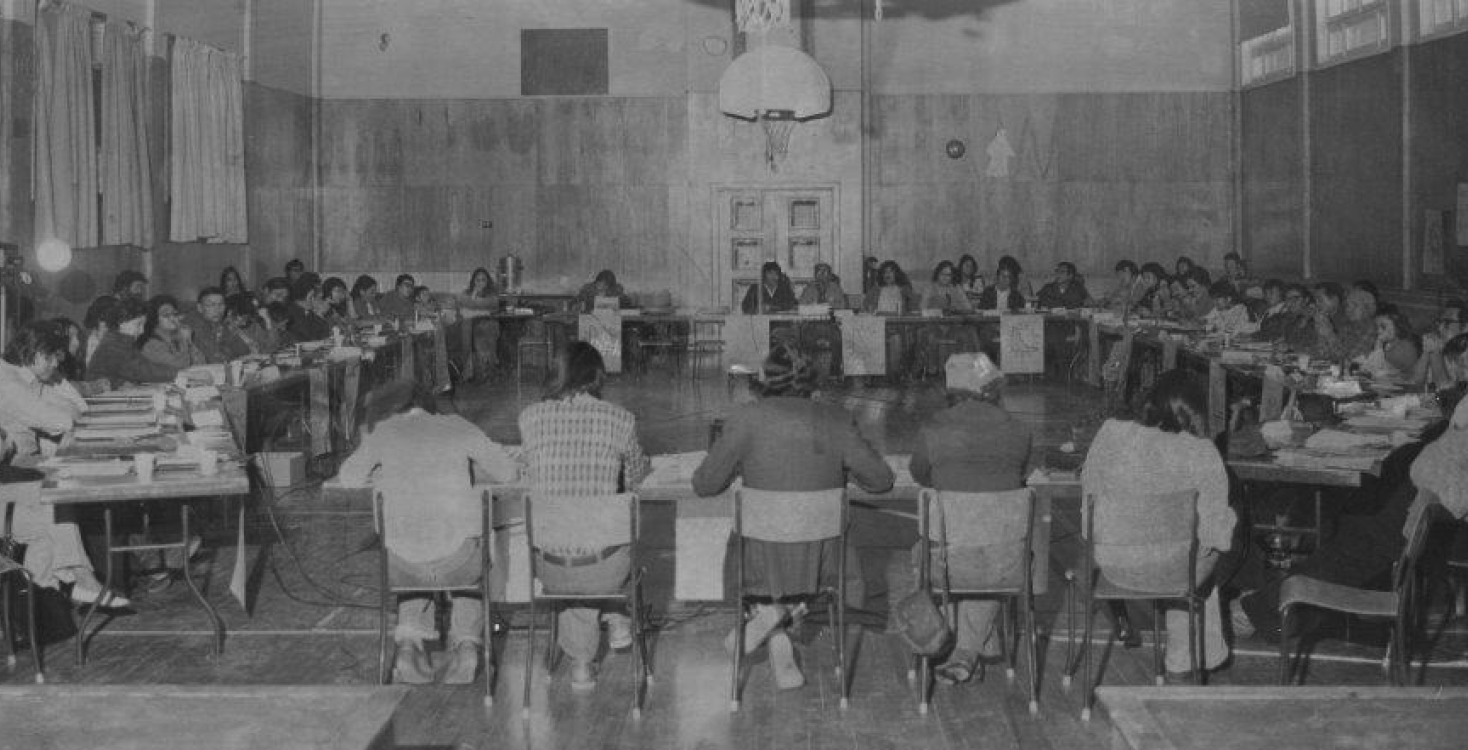
1968
The Yukon Native Brotherhood was formed
The 1960s and 1970s were a time of great social change around the world. The Yukon Native Brotherhood was founded in the Yukon in 1968 when First Nations people throughout Canada were finding a common voice and working toward recognition of their rights.
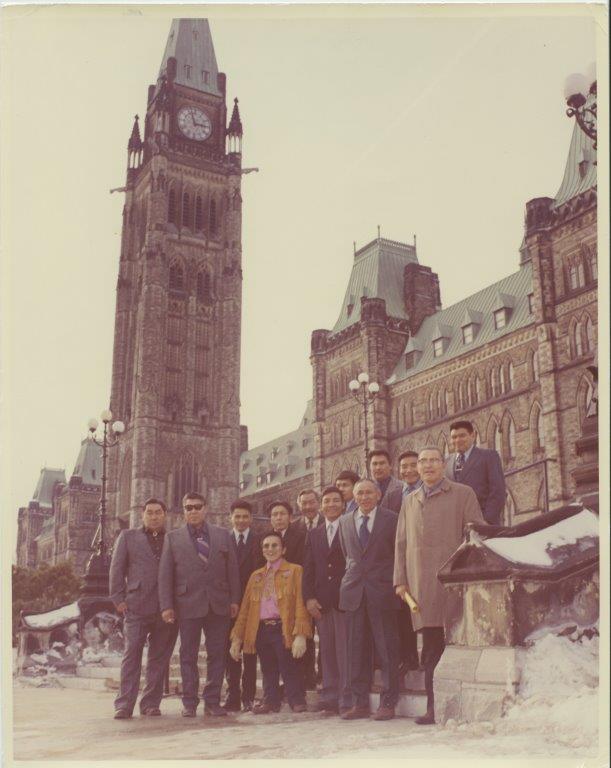
1973
First Nations leaders presented Together Today for Our Children Tomorrow
On February 14, 1973, Elijah Smith and Yukon First Nation leaders presented, Together Today for our Children Tomorrow, to then Canadian Prime Minister Pierre Elliott Trudeau. This ground-breaking document became the basis for negotiating Yukon First Nation land claims.

1973
Council of Yukon Indians was established to negotiate land claims
First Nations were unwavering in their vision that all Yukon First Nations people would benefit from a settlement. In 1973, the Yukon Native Brotherhood and the Yukon Association of Non-Status Indians came together to form the Council for Yukon Indians to negotiate land claims.
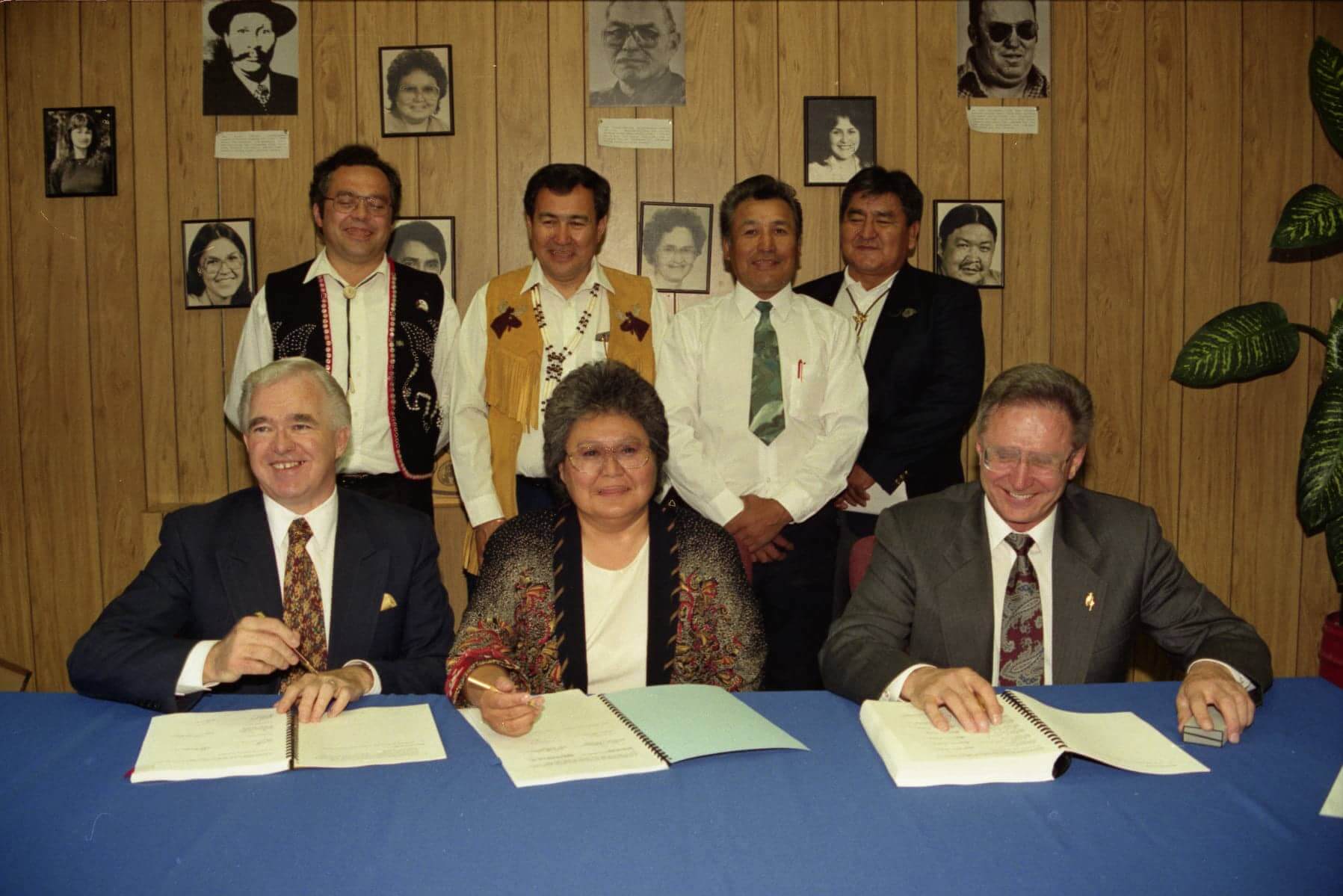
1973-1993
Negotiations between the Government of Canada and the Council of Yukon Indians
Negotiating and settling these agreements involved decades of hard work, innovation and commitment by numerous leaders and visionaries. An earlier agreement was proposed and rejected by Yukon First Nations due to several concerns, including the absence of a self-government component.
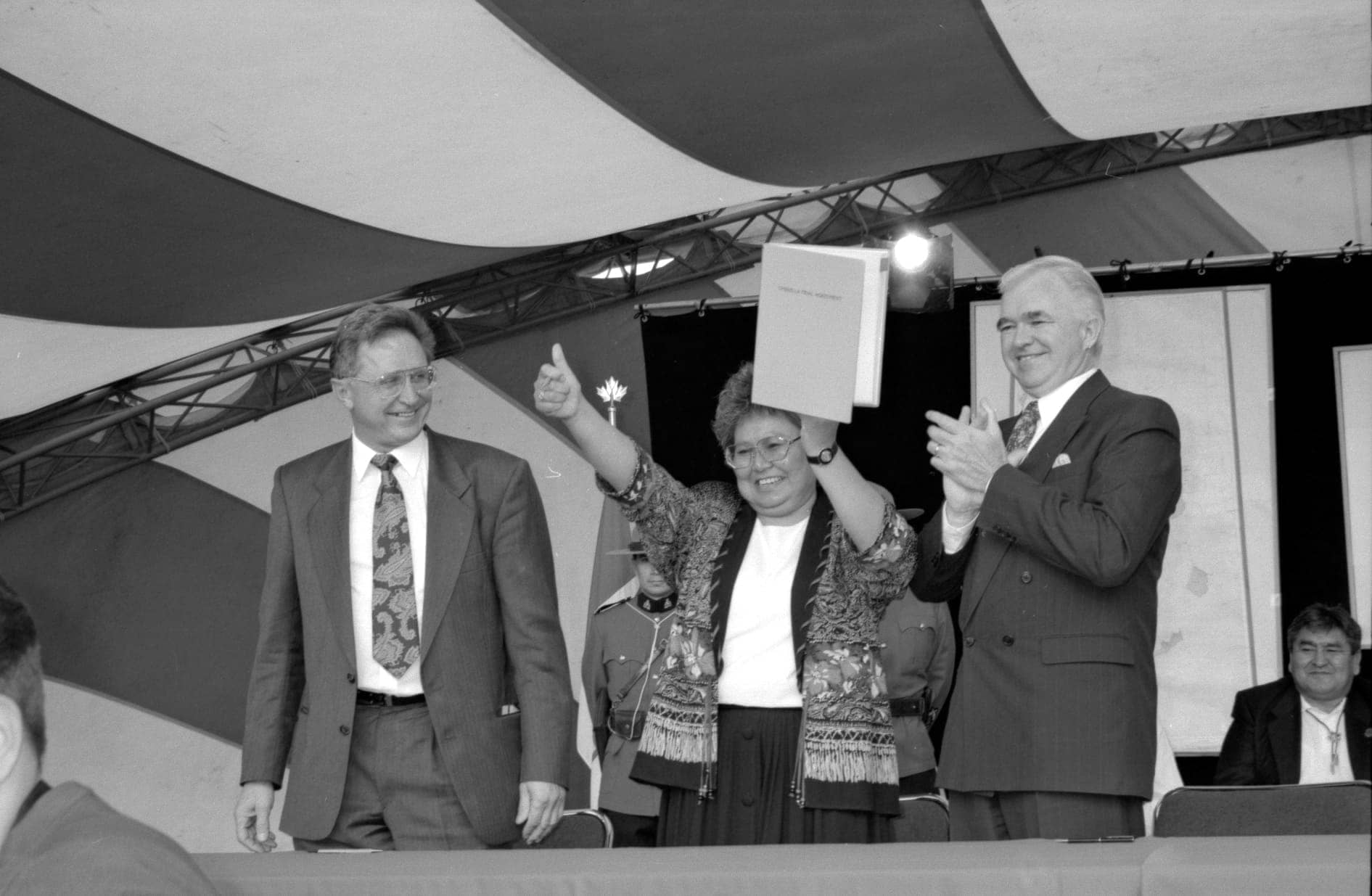
1993
The historic Umbrella Final Agreement is signed
The Umbrella Final Agreement built on the principles introduced by Together Today for our Children Tomorrow. It was the framework for negotiating individual Yukon First Nation agreements. The UFA defined the amount of land and financial compensation for each First Nation, and called for the creation of boards and committees to provide community input and recommendations to government.
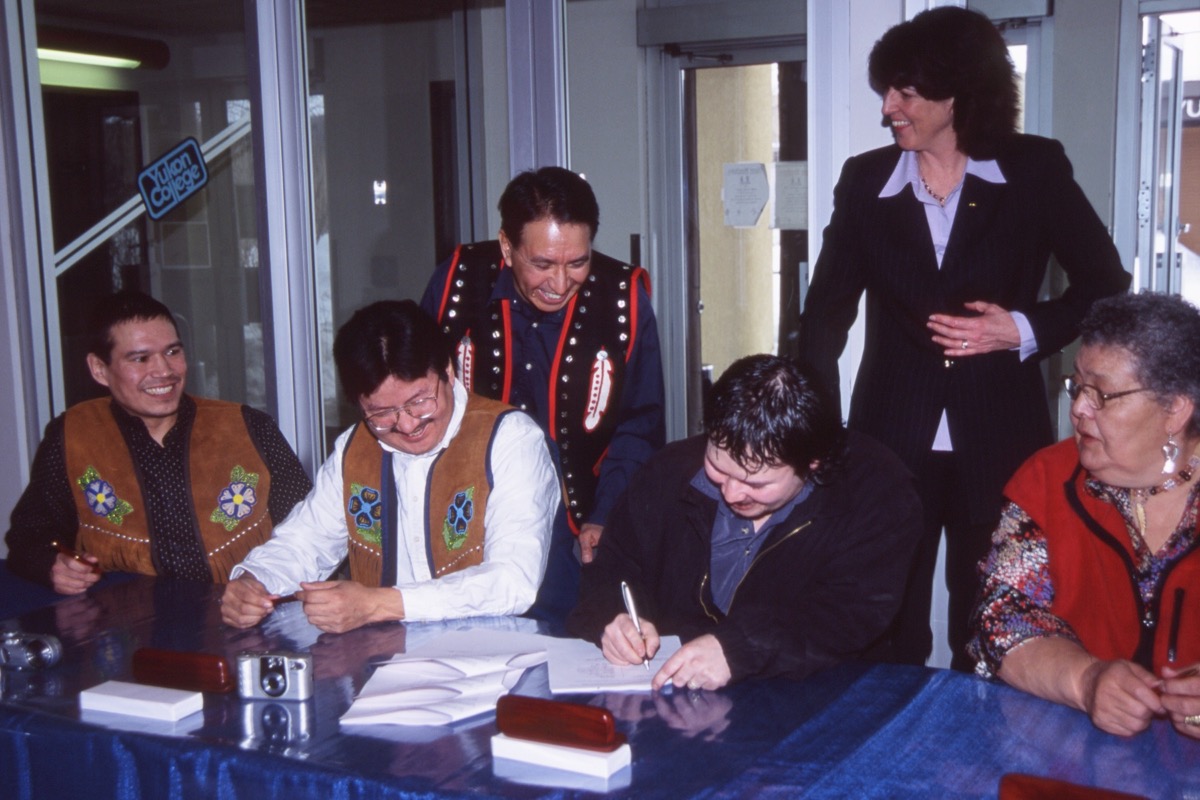
1993-2005
Eleven First Nations negotiate and sign Final and Self-Government Agreements
These are modern treaties that define First Nations’ rights and address heritage, resources, wildlife, water, taxation, compensation, forestry and economic development. The Self-Government Agreements provide First Nations with the power to control their own affairs including law-making powers.

Today
Yukon First Nations are at the forefront of land claims across Canada
Yukon First Nations are at the forefront of land claims and self-government across Canada. 11 of 14 First Nations have concluded their land claims and are independent governments. This represents over half of all land claim settlements in Canada. The federal Indian Act no longer applies to the Yukon First Nations with Final and Self-Government Agreements.
